In many parts of the country, winter brings cold weather that can be dangerous for barnyard animals. Livestock- cattle, sheep, goats, ducks, pigs and chickens- are particularly susceptible to the cold, and need special care during winter months.
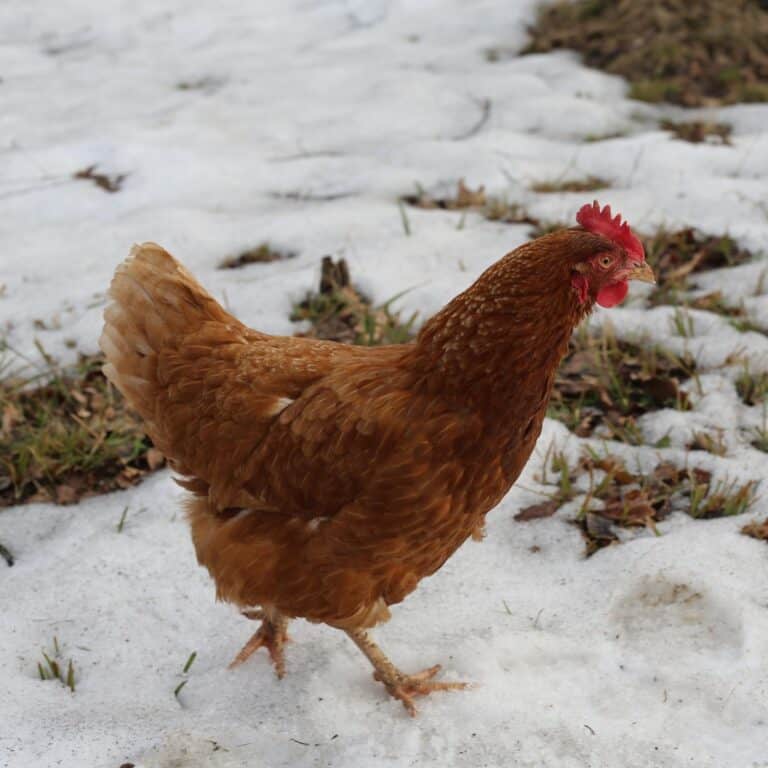
Even though most farm animals can keep themselves warm in cold weather, it is still important to take extra care of them in extreme temperatures. Animals that are wet and left outside in very cold weather can get frostbite, causing them to lose ears, tails, they will most likely get sick and so on.
In this article we will discuss some tips for keeping your barnyard animals safe and warm during cold weather.
Cold Weather Challenges
Before you can learn specific tactics and techniques for keeping your animals safe and warm during bouts of cold weather, it is helpful to understand exactly what you are dealing with.
How does cold weather create challenges on and around your farm or homestead? How does it change how your animals interact with their usual environment?
By answering these questions, you’ll be better informed and more capable of dealing with the practical problems.
When the wind is blowing, snow will drift. Snow that drifts can do harm to fences and structures. Damage or destruction of water supplies and stock tanks is possible.
It isn’t enough that you’ll be dealing with cold temperatures when trying to protect your livestock. Snow accumulation is particularly challenging to deal with and not just because it can directly threaten your animals.
Snow that builds up on and around water tanks, feed and other implements can lead to malfunctions, freezing can cause rupturing and all sorts of other problems.
You’ll need to anticipate these problems and try to deal with them ahead of time or ensure you have backup capability for servicing your animals no matter what happens to their usual routine.
Blowing wind and snow, on the other hand, can create far more cold stress in animals than just the chilly temperatures alone.
Something else to keep in mind is the difference between mere cold weather and legitimate precipitation combined with wind.
Snow or wind alone will strip far more heat off of your livestock than cold air by itself. The two together can freeze your animals solid if you don’t look after them.
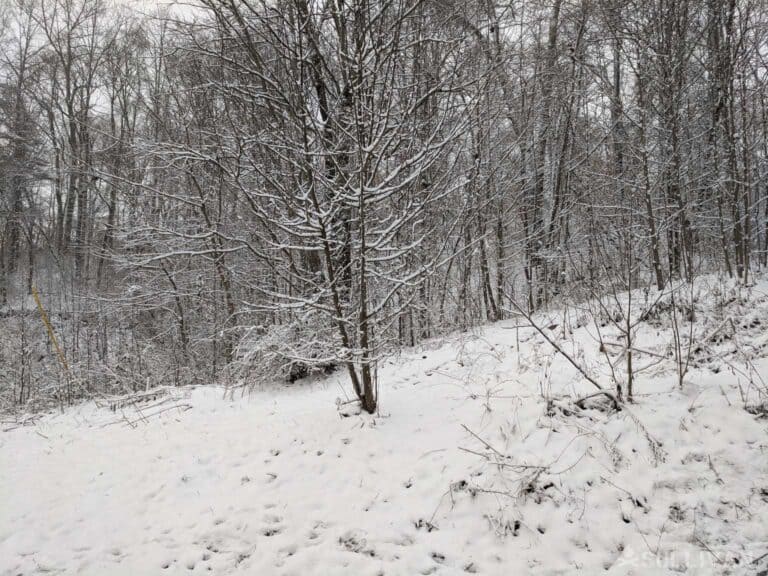
In this regard, larger species like sheep and cows fare somewhat better than smaller critters like chickens and goats. But regardless of the size of the animal, anytime you have snow, wind or both together you’ll have to work even harder and quicker if you want to protect your animals.
Accumulations of snow can prevent access to food sources.
One particularly insidious problem regarding snowfall is that it can stop animals from accessing their usual food sources, feed that you place yourself or forage. Even a little bit of snow that has fallen and is still can lull you into a false sense of security regarding the condition of your animals.
They might be struggling to eat even though the outside conditions don’t seem so bad or have tapered off. Any amount of snow accumulation is an indicator that you must be constantly on guard against your animals being cut off from food or water.
Snowfall can seal off the winter range or pasture, making it more difficult to access and traverse for grazing as the snow continues to pile up.
For animals that are allowed to stay on a pastor or free roaming, keep in mind that even a little bit of snow accumulating might be enough to deter them or completely block access to their usual passage or prevent their grazing adequately to meet their nutritional requirements.
Again, this warning has been produced by hard experience. Many a farmer or keeper has remained complacent because the weather wasn’t that bad and the temperature not so low.
But unbeknownst to them, what snow had fallen precluded their animals from getting the nutrition that they always require, but especially need when temps are low.
Above ground forage (bushes, shrubs, etc.) if present may be more accessible for livestock under cold weather conditions.
Depending on the species and what foliage you have growing in the area, your animals might be able to more readily access and eat above ground forage in the form of bushes, shrubs, trees and the like.
As always, you should not assume that just because it has always been there it is something that they prefer or can even drive nutrition from.
You should not expect animals that routinely graze at ground level, on and among grass, to switch to eating off of bushes and shrubs just because it is cold or snowing.
But if your animals have already shown a preference or amenability to such you can generally depend on them to go to it even if snow is covering their usual food source.
Ice storms are far worse when it comes to blocking food, water and pasturage.
Snow always promises to cause trouble when it comes to taking care of your animals, whatever species they are, but winter weather can do far, far worse in the form of ice. prolonged ice storms simply make all of the aforementioned problems even worse.
Your animals will get much colder even quicker. Food and water sources including forage will be covered up and rendered completely inaccessible, encased in ice.
Slippery ice increases the risk of injury whenever animals move across it, particularly in the case of larger breeds like cows and sheep, though goats and pigs are far from immune to injuries from falling or stumbling.
Frostbite and freezing are more likely to affect extremities that become wet or are generally moist. Noses, ears, tails, lips and reproductive organs may be maimed or require amputation.
One insidious threat for your animals during any period of cold weather, but particularly during times of intense cold and precipitation, is frostbite. Frostbite results when tissues and the fluids within them freeze solid, and is incredibly destructive.
Frostbite is especially likely to strike at the extremities, and for animals with extremities that are typically moist or wet the effects take hold even quicker and more severely.
You must pay particular attention to the noses, ears, tails, lips and potentially even the tongues of your animals that are exposed to cold weather.
Also, reproductive organs, particularly of males, must be monitored closely as even a comparatively mild case of frostbite to these organs might result in the animal becoming unable to breed.
Shelter Considerations for All Livestock Species
One of the most important things you can do to protect your barnyard animals from the cold is to provide them with shelter.
A well-built barn or shed will provide them with a place to stay warm and dry during winter weather. If you don’t have a barn or shed, you can make one by covering an existing structure with tarpaulins or plastic sheeting.
Lacking even this rudimentary protection, you’ll have to get clever if you want to outwit the gnawing cold and save your animals any undue suffering.
Review the following considerations, tips and tricks and you should be able to keep your animals warm enough during the worst weather.
In particularly harsh winter weather, animals might become lost or hurt. Animals must be protected from the weather with shelters, sheds, or windbreaks.
In anything worse than a mild day of winter weather, you must plan on providing your animals with appropriate shelter.
Their typical enclosed or semi-enclosed shelter might be adequate so long as they stay together, or they might need purpose constructed or reinforced shelter to withstand the cold.
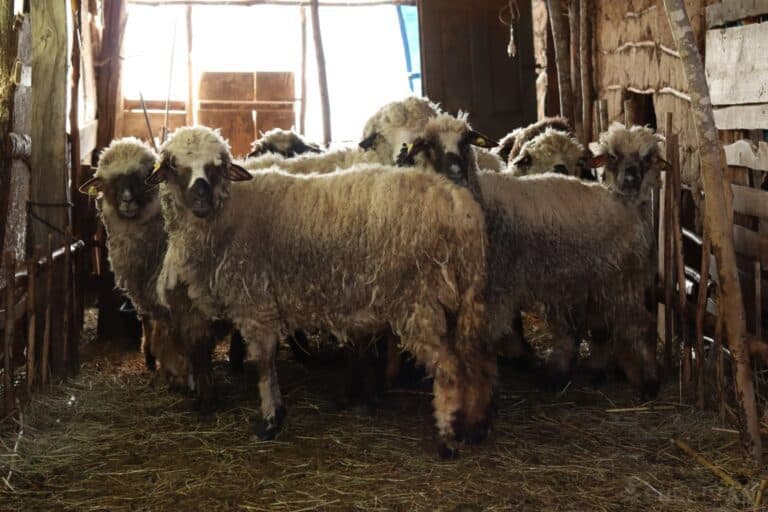
Just because animals are supposed to stay and live outside does not mean they will always be able to cope with the event.
Many species regularly become disoriented and lost in winter weather and, as their condition starts to deteriorate, they might not know where to go or how to get to shelter, meaning you’ll need to physically collect them and get them into shelter if you want them to survive.
When the forecast looks grim, don’t wait and see: take action and start preparing shelter and getting your animals close to it before the weather arrives.
Feed animals as soon as possible before or immediately after cold weather arrives.
Physically sheltering your animals is only one part of keeping them warm when cold weather strikes. The other part, as we will learn in greater detail below, is keeping them fed.
Eating promotes an increase in body temperature, no matter what sort of livestock you are keeping, but they also expend more energy because they are cold.
A greater expenditure of energy means they have greater calorie requirements, and that means you’re going to need more food for them just because the weather has turned nasty.
You can give them a leg up and help yourself at the same time I’m moving them to their food or providing them with extra food as soon as cold weather arrives.
Snow may bury smaller or young animals.
A particular hazard for young animals or small species in particular is being buried alive by snow, sleet, or ice. These animals don’t necessarily have the strength to move through drifts of snow or snow that is encrusted with ice, and can easily become trapped where they will surely perish.
Don’t think that their parents will always be able to find them or get them out under the circumstances, either. It is up to you to keep an eye out for them and make sure they do not become trapped in snow at any time.
Pay particular attention when trying to get all of your animals into shelter and also when you let them out periodically to get a little exercise.
Similarly, cold temperatures are far more dangerous for smaller or young animals.
It should be apparent to anyone with experience in keeping livestock, but it is worth mentioning here for completeness. Smaller species or younger animals have less body mass compared to larger species or adults respectively and this means they are more vulnerable to the effects of cold.
Hypothermia will start to take hold more quickly, and particularly negative effects like frostnip and frostbite will set in quicker.
If you have multiple species on your farm to deal with, prioritize protecting smaller animals and young ahead of adults.
In brief or mild snowfall events topographic features that are part of the landscape ( hills, gullies, ravines, draws) may be enough of a windbreak to shelter livestock.
Assuming the weather isn’t too bad, or is predicted to break quickly, you might not need to herd all of your animals into an enclosed shelter, be it a barn or anything else.
Depending upon the prevailing winds, certain landscape features on your property – be it a hill, ravine or something else- might serve as enough of a windbreak to give your animals adequate shelter so long as they stay together.
Some species, particularly cows, sheep and goats, will instinctively huddle together anywhere they can get a little protection from the wind under the circumstances.
In such a case, you can allow them to do so and wait for the weather to clear, though you should always be prepared for a sudden, unexpected worsening.
The efficacy of windbreaks is determined by their height and density.
The taller a windbreak feature is the better it will be at sheltering your animals. Essentially, the higher the windbreak rises over the less they will feel the effects of the wind.
By the same token, the less wind that a windbreak allows to slip through the better it is for the animals as they will stay warmer.
A solidly constructed windbreak offers the best protection, but might not be a naturally occurring feature.
Evergreen trees, such as fir and pine, are excellent windbreak options.
Common natural windbreaks are trees, and they can prove to be entirely adequate for the purpose.
Particularly if your trees are an evergreen type that maintains its foliage in the winter time they will likely block the most wind possible. Trees that lose all of their leaves and foliage in the winter are far less effective.
CAUTION: During heavy precipitation events those same landscape features might accumulate snow and trap livestock in place.
As a follow-up to the above tip, you must always, always be aware that fallen snow or actively falling snow could be blown by wind up against that same landscape feature and trap your animals in place, particularly the smaller species.
Even larger species like cows might be entombed in place by the snow.
This is especially dangerous because once they are covered with snow their body temperature will drop at a frightening rate and they’ll be in real trouble.
If your animals are sheltering in such a landscape feature out of your sight, make sure you check on them periodically to ensure snow is not drifting up at their shelter location.
However, when animals are fed properly, cold temperatures without wind seldom cause issues.
Assuming you’re not dealing with any precipitation in the form of snow or ice, and you don’t have a stiff wind to worry about, giving your animals additional food is probably enough to get them through a short bout of cold weather with absolutely no problems.
So long as they are a species that is acclimatized to temperate or cold weather, additional calories will give them everything they need to stay warm enough to endure the conditions. However, any sustained wind or precipitation is caused to take additional action. See below.
Animals may suffer from cold effects when exposed to wind alone. A 20 mph wind is comparable to a 30°F drop in temperature.
Considering wind, even if the weather outside is not that cold wind alone can prove sufficient to induce hypothermia and other ill effects in your animals.
Just like ourselves, being exposed to any amount of wind but particularly a strong, sustained one will strip heat out of our body at an alarming rate.
Just because it isn’t snowing and there is no ice forming on the eaves or gutters does not mean that your animals have nothing to worry about.
When the wind is blowing hard enough, you might need to take action even though temperatures or high enough that it normally wouldn’t warrant it.
Simple shelters won’t always be sufficient in keeping animals safe during extreme winter storms.
Depending on where you live, winter might bring on storm systems severe enough that the typical precautions and measures listed above may not prove sufficient for protecting your herd or flock.
In such a case, you must take action to further reinforce your shelter against the cold or provide your animals with additional protection.
Heaters, warmed drinking water, blankets and so forth might all be required. If you live in an area that experiences such weather events even semi-regularly, you must be prepared for them ahead of time or expect losses.
Locate structures that will not allow wind or snow to enter or deflect into the shed, such as neighboring buildings, trees, or topography.
If erecting or improving a shelter for your animals, take care that you think through the placement and any openings on it if they are only semi enclosed.
Pay attention to nearby terrain features and other structures. Wind and snow both can deflect off of these features or structures and enter the opening of the shelter, robbing it of most of its protective value.
In certain circumstances, snow fences might be a good compromise or alternative to tree windbreaks. They can also be utilized in conjunction with solid barriers or tree windbreaks.
It is possible to use fallen snow as a construction material for the creation of effective windbreaks. This technique has been used by people indigenous to areas of extreme cold for millennia, and is used in modern times by explorers of the polar regions.
This technique can also work well for your animals, although it can prove to be a laborious task if doing so by hand. any heavy equipment you are able to bring to bear for the purpose will greatly speed up the job.
You can use these mounds or blocks of snow in conjunction with existing windbreaks in the terrain, just make sure you take care to bank or slope the snow facing where the wind is coming from.
When it comes to clearing snow, you need to have a plan in place and know where the snow will drift under various wind conditions.
as mentioned in the previous section drifting snow is a major pain, and it can prove itself to be even worse when it impedes your access to your animals if you have them sheltered in a barn or other structure, or you are trying to open or close gates that might be blocked by it.
Make it a point to keep an eye out at any access control points, doors, gates, crossings and so forth so that you may take action before snow becomes too deep, and make sure you have tools close at hand for quickly clearing these locations should you need rapid access.
Indoor shelters that are tightly closed may cause a lack of oxygen for livestock, resulting in suffocation.
It is something that would hardly cross the mind of people sheltering under the same circumstances, but believe it or not it is possible for your livestock, particularly larger species, to suffocate when there are too many of them in a tightly closed space.
Many animals in a given space means lots of oxygen being used, and an inadequately ventilated space might not allow fresh air in quickly enough to supply all of them.
This would be a terrible way to go for the animals you’ve worked so hard to protect, so no matter how cold it is you must take care that plenty of fresh air is allowed into the shelter. See below for more details.
Ensure adequate ventilation of any tightly closed shelter. Slot openings should be placed along the eaves at the rear of the shelter.
Openings are essential to allow for adequate ventilation and airflow through the shed and to prevent snow from swirling and accumulating in front of it.
Generally you will want a 2”-3” opening near the ceiling or roof line of the shelter placed approximately every 5 to 10 ft of width along the wall.
Be wary of packing livestock into any shelter too tightly: overheating, even under the cold conditions, is possible and may exacerbate other health issues.
Another special hazard associated with packing your livestock into a shelter is that of overheating, believe it or not. This is probably the last thing that an amateur farmer or keeper is considering under the circumstances, but it is nonetheless a problem.
Particularly with larger species in a warm space, it is entirely possible that they will grow too hot and get stressed out.
Any existing respiratory ailments or other conditions are likely to be aggravated and this can lead to a downward spiral of stress and anxiety that can see your animals getting out of control.
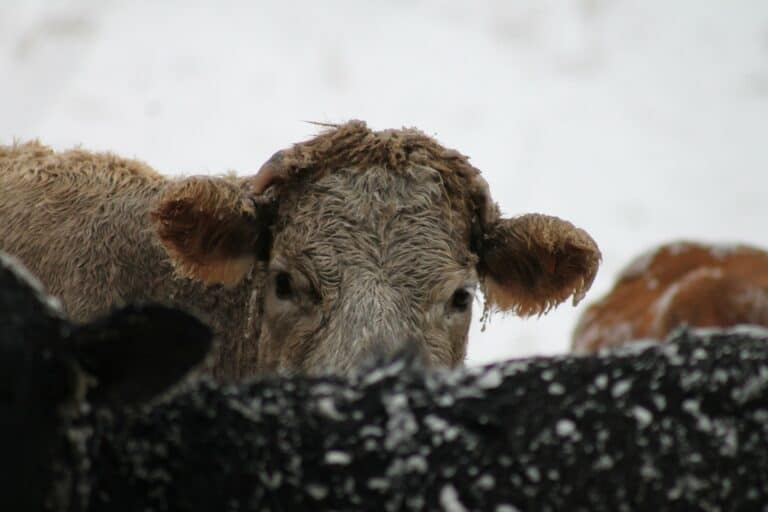
Expect Challenges When Trying to Move or Gather Your Livestock
As any seasoned farm hand will tell you, trying to get the cooperation of your livestock, to move them, gather them or any other purpose, is easier said than done, even when you’re dealing with smaller animals.
Unfortunately, your challenges are likely to be exacerbated severely by the weather conditions. Severe weather, particularly cold, stresses most animals and can lead to bad behavior and a general attitude of non-cooperation.
You’ll need to take this into account if you want to keep your animals safe when bad weather threatens.
Livestock may avoid traveling straight into a strong wind or an approaching storm.
Most animals don’t like facing into a strong wind, and they especially don’t like facing into windblown rain, snow or sleet.
This can work for or against you when cold weather storms approach depending on where you’re trying to get the animals to go.
If the wind is blowing towards their shelter, they may readily follow you there. But if your shelter is in the opposite direction, you’re probably going to be working overtime in order to coax them in that direction.
Unless they are seeking for a known refuge, livestock will usually flee the force of an oncoming storm.
When a particularly bad storm is brewing, your animals are unlikely to wait around and will instinctively flee from the approach of it.
In smaller pens and pastures, this isn’t such a big deal, but if your animals are allowed to freely graze or roam across a range, they might scatter in different directions or literally head for the hills.
It is in your best interest if you can make contact with them and try to gather them before the storm front arrives properly, assuming you have advanced notice of its approach.
The survival instincts of your animals may interfere with your ability to herd or move them.
There’s just no other way to say it. When your animals are intensely stressed or frightened, their survival instincts are probably going to work against you. It might make them hard to control, aggressive or heedless of any efforts to help or herd them.
Some animals might go berserk with fear, and fear is infectious. Unfortunately, you might have to choose between the one and the many when dealing with uncooperative animals in bad weather conditions.
Even marginal shelter may entice your livestock to stay where they are (against your wishes).
it’s kind of funny so long as it doesn’t happen to you, but if your animals are able to take even the most marginal shelter on their own against the conditions, you might find those aforementioned survival instincts keep them rooted stubbornly in place.
Never mind the weather could be worsening. Never mind the fact they will certainly die if they stay there. They just won’t be able to help themselves, and they’ll damn sure make it hard on you when you try to help them.
You might need to resort to some pretty creative methods in order to dislodge animals that are sheltering in place.
Extreme weather conditions and low visibility can cause livestock to panic.
Be especially cautious when herding or directing larger animals. Low visibility in bad weather conditions might result in panicking, and that panicking can have injurious or even fatal consequences for the animals and potentially for you.
It might be very difficult under the circumstances, but do the best you can to keep your animals calm, and endeavor to get them safely into an appropriate shelter before conditions get too bad.
Due to herd or parental instinct, older animals may follow or try to stay near young ones that are being relocated or treated.
Animal instincts can manifest in other ways during conditions of rough weather.
Parents of young or older animals in general might stubbornly insist on staying near or protecting younger members of the flock or herd, despite the fact they cannot offer them much in the way of real protection.
This will usually result in them generally getting in your way, or acting counterintuitively to the will of the herd, flock or their handlers.
It might even result in aggression when you move to help the little one. It’s the last thing you want to deal with, but you must be prepared for it nonetheless.
How Much Food Do You Need?
The answer to this question depends on the type of farm animal, of course. Here’s a quick table showing how much food the most common types of farm animals typically need:
| Cattle | Around 2.5-3% of body weight in dry matter |
| Sheep | Around 1.5-2.2% of body weight in dry matter |
| Pigs | Around 4-5% of body weight in dry matter |
| Horses | Around 2.5-3% of body weight in dry matter |
| Goats | Around 5% of body weight in dry matter |
| Chickens | About 0.25 pounds of feed per day per chicken |
Keep in mind that this is dry matter, and it assumes that the feed has 0% water content (which is not the case).
Dry matter feed calculations need to be converted into what’s known as an “as-fed” calculation. This simply means adjusting the animal’s intake of food based on how much water it contains.
As a general rule, most animals will need to be fed a little more than their calculated dry matter intake. Most people use 90% for how much dry matter is in feed (like stored hay), meaning that 10% is water. This is a pretty safe number to rely on for calculating feed.
You should also remember that some animals may eat more or less, and the condition of the animal greatly affects how much they eat.
Gestating and lactating animals normally require more food in order to continue producing. Young animals require enough food to sustain steady growth.
In freezing temperature, same thing: animals need to eat more to maintain their body temperature. In some cases their intake could double.
If you fail to meet an animal’s nutritional needs (either with low quality food or not enough), the it’s growth will slow down, it may produce less milk, or it’ll get sick die.
In deciding how much or what to feed your animals, you will also need to consider the quality of your pastures.
You also need to be sure that your hay does not have any mold and is stored in a cool, dry place, otherwise, they could get sick if they eat it.
What’s the Best Way to Water Your Animals?
Much like food intake, water intake also needs to be increased for your animals to remain healthy in extreme temperatures. This is because the animal’s metabolic rate is increased as it tries to maintain its body temperature.
The water you give them needs to be as clean as possible. Animals will not drink water by eating snow or licking ice, and too much salt in water can make them sick.
Freezing water will be a problem in extreme cold. Smaller water containers will freeze faster, an important thing to keep in mind for chicken waterers.
You may want to invest in tank heaters to keep your water from freezing, though in a disaster situation, these may be more problematic due to gas and electricity requirements.
If at all possible, give your animals water that has been slightly warmed, because cold water lowers their overall body temperature, which means they have to use even more energy to stay warm. Thus they’d have to eat more.
Lack of water can spell disaster for your livestock – if your animals have been deprived of a good source of water for too long, they may drink too much at once, which can cause its own problems. Otherwise, your animals may become constipated, or develop other health issues.
What Sort of Shelter Should You Provide?
While your animals will still be spending some time outside in cold weather, it is inevitable that they will spend an increased amount of time inside.
For this reason, you need to make sure that your farm animals have a safe, warm indoor environment when the weather gets bad.
The best thing is a sturdy barn; however, sheds or simple lean-tos are better than nothing. At the very least, your farm animals will need something to protect them from bitter wind, pouring rain and snow.
Your barn should be well-ventilated, but tight enough to keep in the warmth generated by the animals.
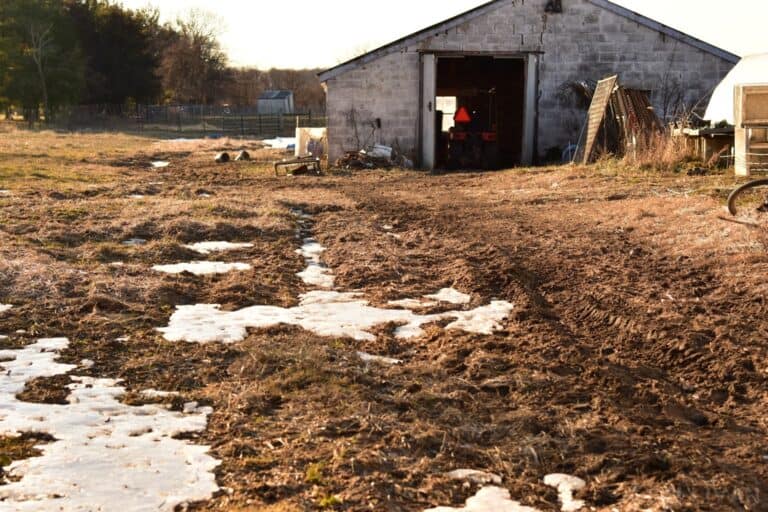
Pro tip: put your chicken coop inside your greenhouse. This will not only further protect your chicks from extreme temperatures but it’ll also keep your veggies warm.
However increased time inside means that the bedding in your barn will need to be changed more often. This is why you need to keep it clean and dry at all times. If you don’t, fumes from the ammonia present in the waste can cause your animals to become sick.
Chicken coops are slightly different than livestock barns in that they should be built off of the ground to adequately keep out snakes, improve air circulation, and more.
However, many of the principles for maintaining your chicken coop in the winter (or any other time) are the same as they are for livestock barns.
Your chicken coop does not need to be too tightly insulated, as this can increase the moisture in the air of the coop (which can lead to frostbite in the winter). However, it should be well insulated to stay warm and not too drafty in the winter.
You probably should avoid keeping a heated coop because it’s a fire hazard. Nevertheless, it can be a temporary option in extreme temps.
Much like livestock barns, chicken coops need to be regularly cleaned (especially in winter) to prevent too much ammonia from getting into the air.
Your birds will likely be spending more time inside in extreme cold weather. You also need to remember to gather your chickens’ eggs more often to prevent them from freezing.
Also, make sure that they aren’t locked in the coop for too long, as chickens can become bored and start fights with each-other (a larger coop can help prevent this).
Many people alleviate this boredom with treats to entertain their chickens, like a head of cabbage for the hens to peck at. It is also a good idea to leave the door open most of the time so they have the freedom to go outside if they want (unless the snow is too deep for them to walk in).
The biggest thing to watch out for, for any of your farm animals, is keeping them as dry as possible during extreme weather. Wet animals can very early catch frostbite. If you notice any animals in your pasture shivering, it’s a good idea to bring them inside.
Noticing this will require that you keep watch over your animals more closely, but the value of the animal far outweighs the value of the time spent monitoring it.
You can put dry blankets on them, but this will only help if both the animal and the blanket are fairly dry. Trapping moisture against their skin will also increase the risk of frostbite, so you need to change the blanket regularly.
How Much Time Should My Animals Be Outside?
Even if the weather is terrible, you need to make sure that your animals get enough exercise. Being cooped up for too long can make animals more likely to get sick, produce less, and hurt each other (especially chickens). Horses can develop bad habits if they’re kept inside too long.
Even if it’s only for a few hours each day, you should strive to let your animals get some fresh air, even if only for a few minutes.
Wrap-Up
Animals, just like people, are susceptible to dying in extreme temperatures. However, with proper knowledge and maintenance, your livestock can be well-prepared to survive a tough winter, even if it’s post-collapse.
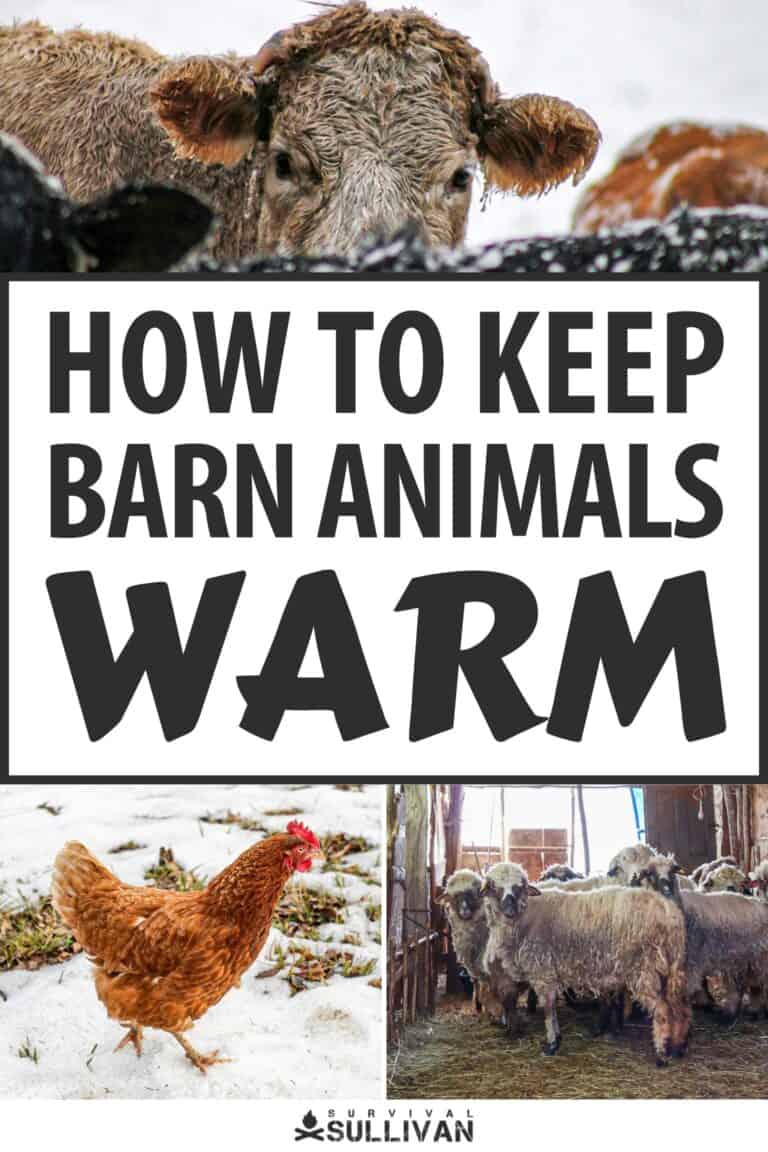

My name is Teresa Fikes. I am a Homesteader, survivalist, prepper, historian, and writer plus much more all in one package deal. I was raised on a small family farm were I was taught at an early age to survive off the land without the help of modern conveniences. I am a writer by profession and a Homesteader by Blood, Sweat, and Tears.
